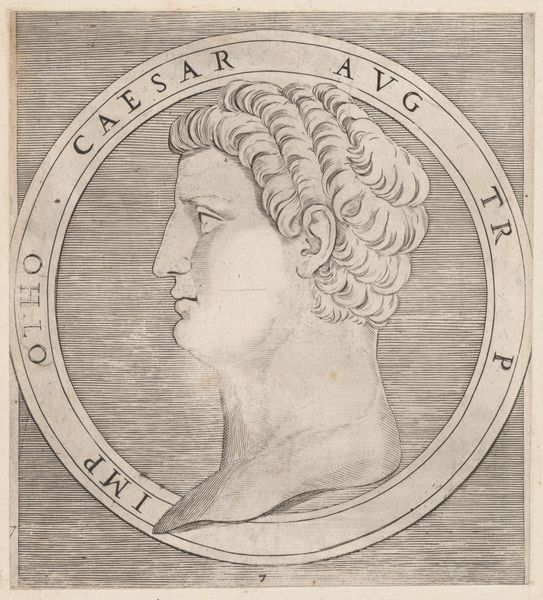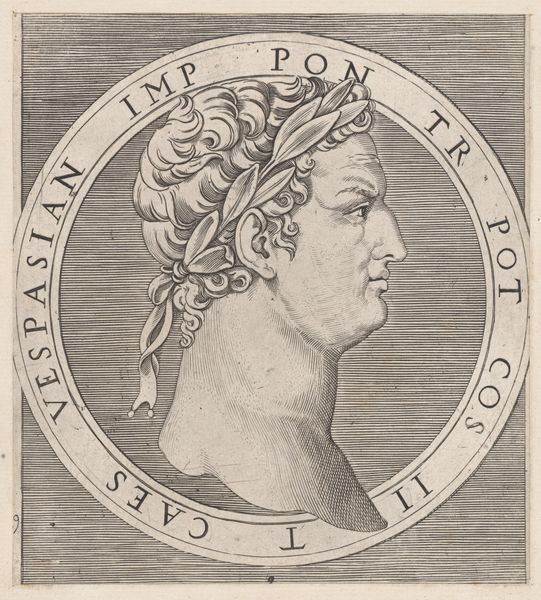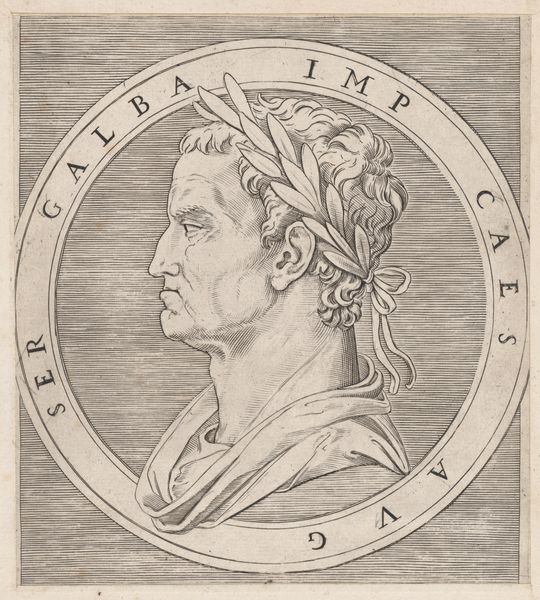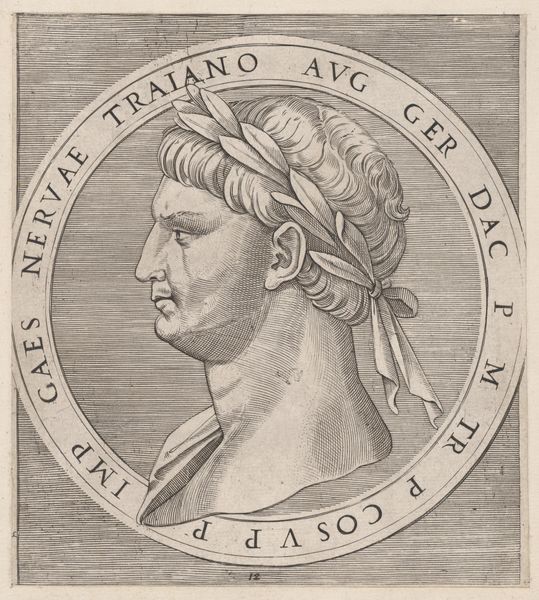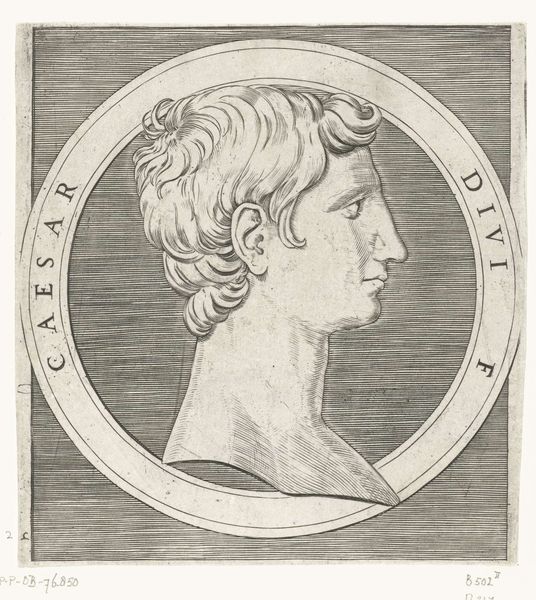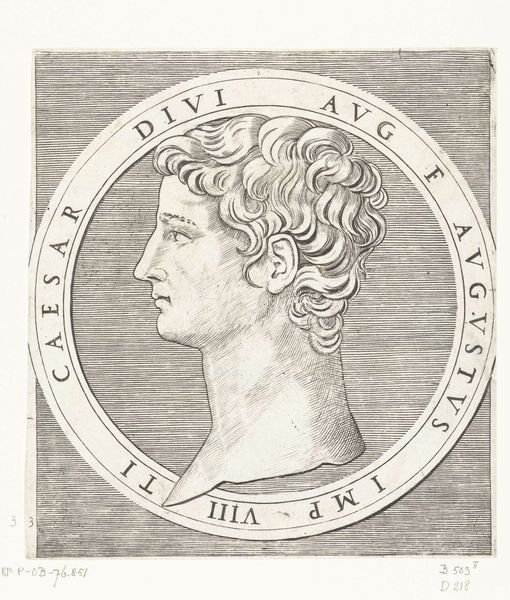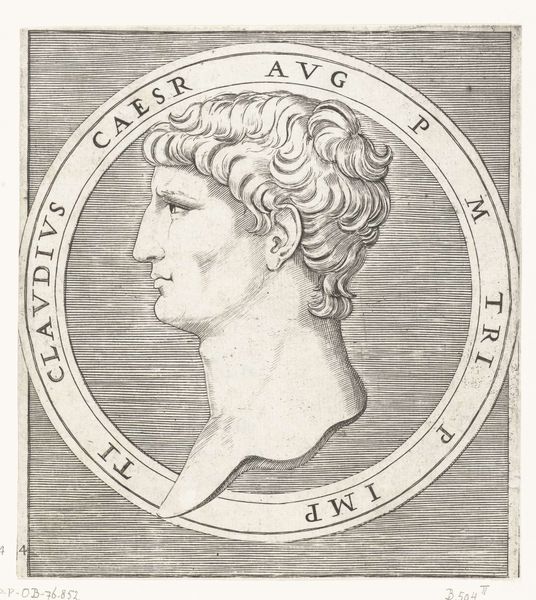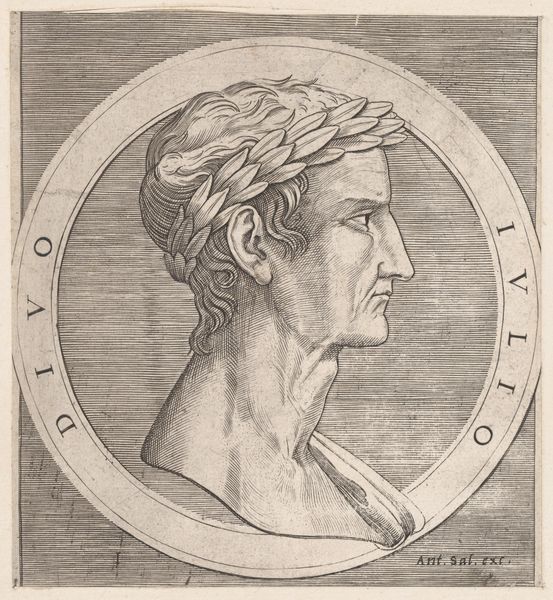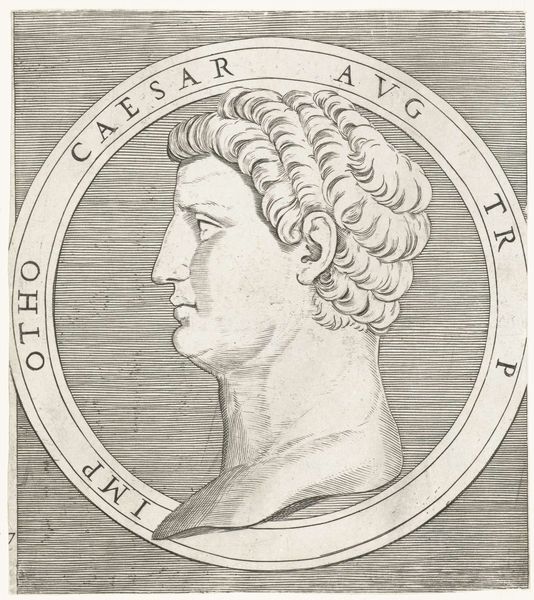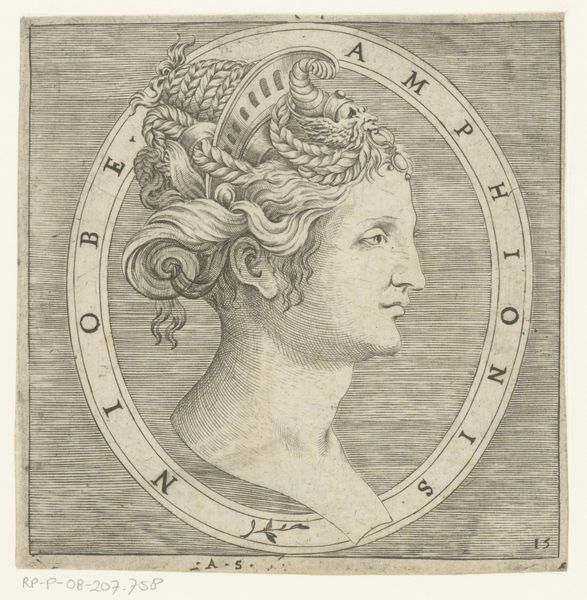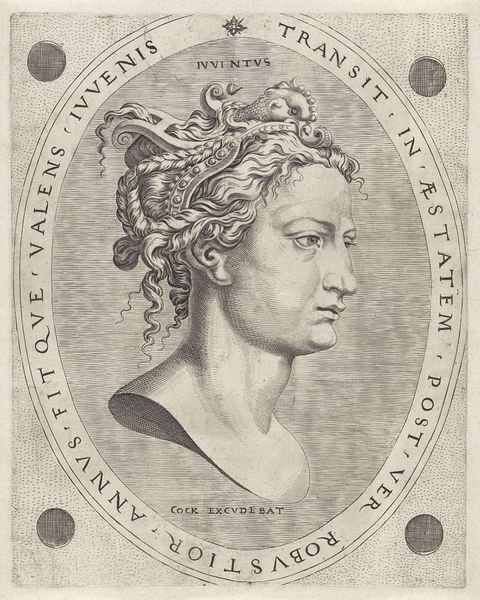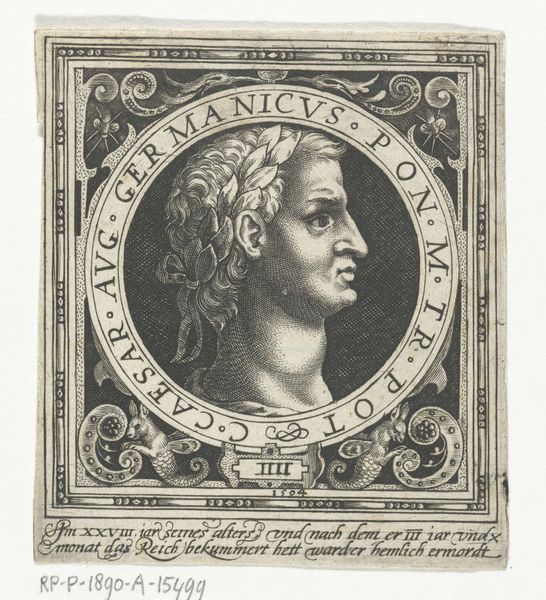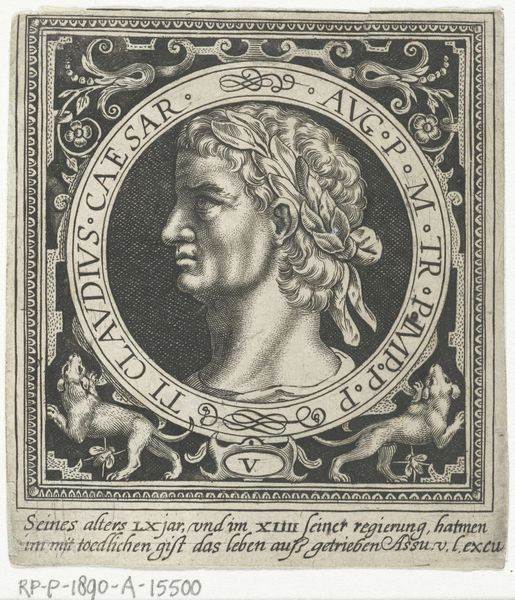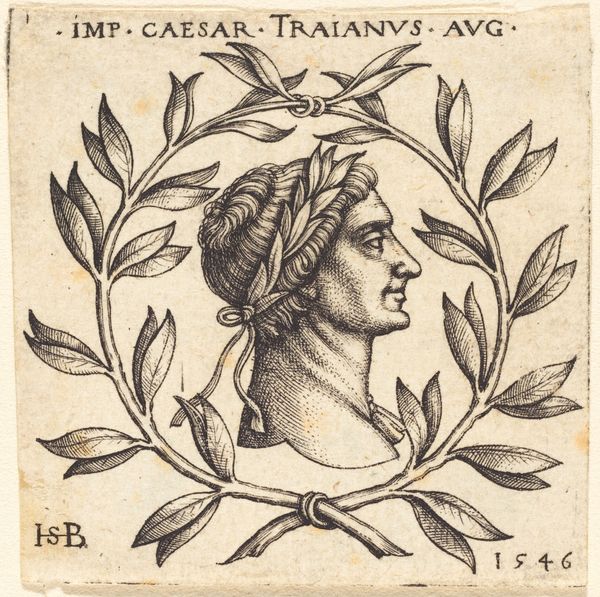
Speculum Romanae Magnificentiae: Nero, from The Twelve Caesars 1495 - 1539
0:00
0:00
drawing, print, metal, engraving
#
portrait
#
drawing
# print
#
metal
#
old engraving style
#
11_renaissance
#
ancient-mediterranean
#
men
#
history-painting
#
italian-renaissance
#
engraving
#
profile
Dimensions: mount: 13 1/4 x 11 in. (33.6 x 28 cm) sheet: 6 11/16 x 5 7/8 in. (17 x 15 cm)
Copyright: Public Domain
Editor: Here we have Marcantonio Raimondi’s engraving, "Speculum Romanae Magnificentiae: Nero, from The Twelve Caesars," created sometime between 1495 and 1539. It’s a profile portrait of Nero, and I'm struck by the detail achieved in the rendering of his hair and the laurel wreath. What stands out to you in this work? Curator: What intrigues me is how this Renaissance print engages with the loaded image of Nero. Consider that this was made at a time when ideas about leadership and tyranny were being fiercely debated. This image isn’t just a neutral portrait; it’s an active construction of power, both Roman and papal power. Editor: How so? I mean, Nero has a pretty bad reputation... Curator: Exactly. The “Twelve Caesars” series was immensely popular and aimed to portray Roman emperors to legitimize current rulers, and by showcasing figures like Nero, you engage in discourse about moral authority and abuses of power. Look at the Latin inscriptions, intended for a scholarly audience capable of understanding and participating in this ideological game. This image forces viewers to consider what constitutes legitimate rule versus cruelty, what we today consider forms of structural violence, the abuses embedded within social and political norms. How might contemporary viewers, facing their own forms of injustice, connect to this complex image? Editor: That’s a really interesting point. It almost makes you question whether we ever really escape these cycles of power and abuse, even centuries later. Curator: Precisely. These images serve as historical reminders of our ongoing struggle with ethical leadership. We need to reflect on history critically to break those very cycles. Editor: Thanks! I’ll definitely look at art history differently now. Curator: Wonderful. Seeing these works in a contemporary sociopolitical landscape definitely changes one's appreciation for them.
Comments
No comments
Be the first to comment and join the conversation on the ultimate creative platform.
